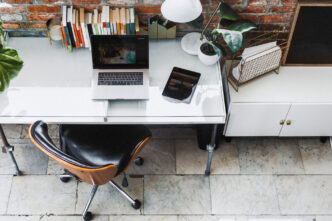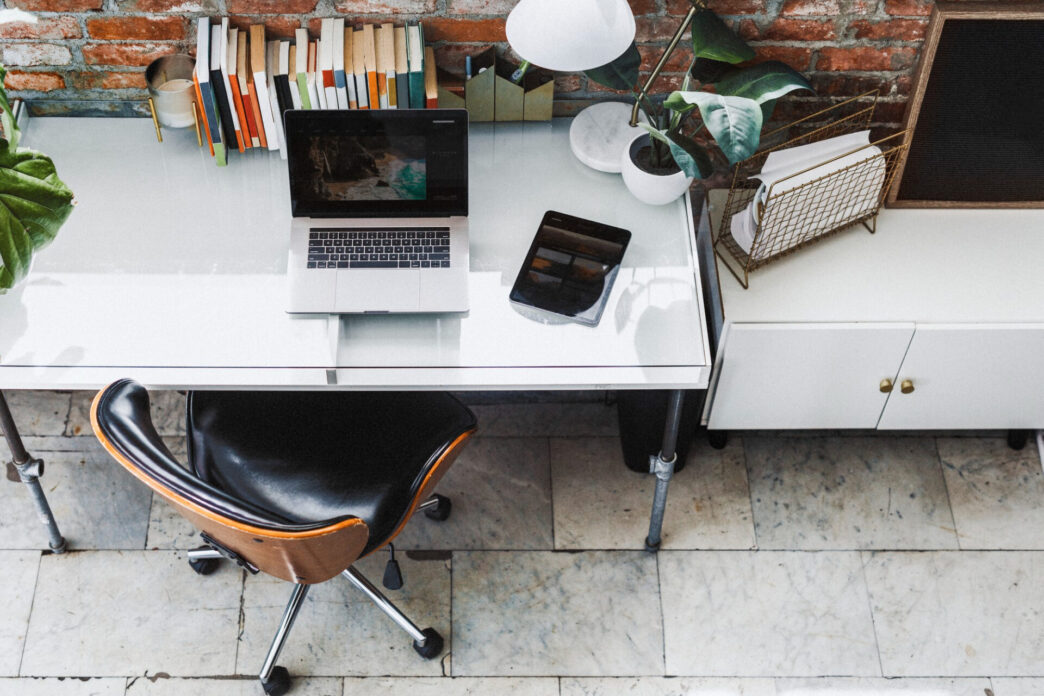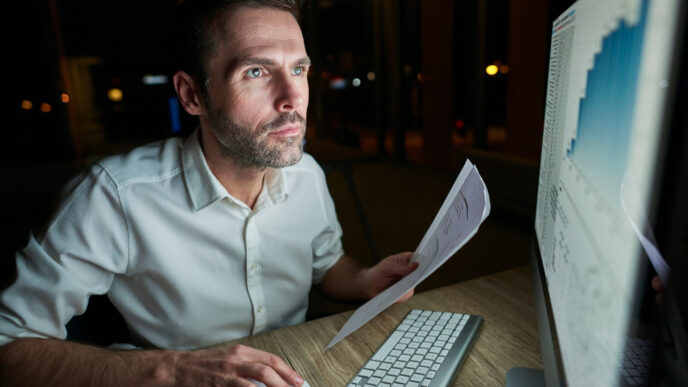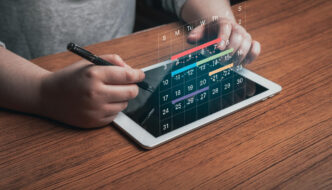Why Decluttering Your Life Changes Everything
Are you constantly busy but never truly productive? You might be dealing with more than just a full calendar—you may be carrying the invisible weight of clutter. Whether it’s a messy desk, a chaotic inbox, or an overwhelmed mind, clutter steals focus, drains energy, and holds back your best work.
Decluttering your life isn’t about achieving perfection—it’s about creating space for what really matters. When you organize your workspace, cut digital noise, and quiet mental chatter, something powerful happens: your productivity increases without you working harder.
This article is your guide to making that shift. It’s not just about tidying up—it’s about building a sustainable system that helps you:
✔️ Organize your workspace to eliminate distractions and streamline your day
✔️ Master digital decluttering techniques that reduce noise and increase clarity
✔️ Clear your mind using mental decluttering habits that enhance focus and reduce stress
You’ll learn how to simplify your environment, take back your time, and design a daily rhythm that supports deep work and sustainable results. From physical spaces to digital tools to internal thought patterns, we’ll walk through practical steps you can apply immediately.
Let’s move past the overwhelm and get back to what really matters—clarity, control, and meaningful progress.
Understanding Clutter: Physical, Digital, and Mental
Clutter is often thought of as just a messy desk, but in reality, it comes in three forms: physical, digital, and mental. Each type impacts productivity and focus in different ways, making it essential to address all three when striving for an efficient work environment.
The Hidden Costs of Clutter
At first glance, clutter might seem harmless—just a little mess here and there. But research suggests otherwise. A study from Princeton University found that visual clutter competes for your attention, reducing focus and increasing cognitive overload. In another study by UCLA, researchers observed that household clutter leads to increased cortisol levels, the hormone responsible for stress.
The hidden costs of clutter include:
✔️ Reduced Focus – A cluttered workspace constantly reminds you of unfinished tasks, pulling your attention away from your current work.
✔️ Decision Fatigue – Too many choices and too much information overload can make even small decisions feel overwhelming.
✔️ Wasted Time – Searching for lost files, important emails, or misplaced objects consumes valuable time that could be spent on meaningful tasks.
✔️ Increased Stress – A chaotic environment leads to heightened anxiety and mental exhaustion.
When clutter is unmanaged, it doesn’t just affect our workspace—it trickles into our mental space, impacting clarity, efficiency, and overall well-being.
How Clutter Affects Your Productivity
Clutter isn’t just an aesthetic problem; it directly affects your ability to perform at your best.
🔹 It slows down your workflow – Every unnecessary item, whether physical or digital, creates extra steps. Searching for documents, shifting through piles of paper, or scrolling endlessly through emails takes time and energy.
🔹 It decreases creativity – A cluttered environment overstimulates your brain, making it harder to generate new ideas and think outside the box.
🔹 It causes procrastination – When your workspace is chaotic, the sheer act of getting started feels overwhelming, leading to avoidance and decreased motivation.
🔹 It leads to multitasking – Clutter tricks your brain into thinking about multiple things at once, causing unnecessary distractions and making it difficult to concentrate on a single task.
By reducing clutter, you eliminate unnecessary distractions, making it easier to focus and get things done efficiently.
The Psychology of Clutter and Decision Fatigue
Every day, we make hundreds of small decisions, from choosing what to wear to prioritizing tasks at work. But clutter forces us to make even more choices—where to put things, what to ignore, what to delete. Over time, these micro-decisions build up, leading to decision fatigue.
🔸 Decision fatigue occurs when mental energy is drained from excessive decision-making, making it harder to focus on important tasks. Studies have shown that cluttered environments increase cognitive load, making people more likely to feel exhausted and overwhelmed.
🔸 Clutter also creates a psychological burden – When you’re surrounded by unfinished tasks, disorganized spaces, and overflowing inboxes, your brain registers them as “open loops,” creating a feeling of being constantly behind.
To counteract decision fatigue, streamlining your environment is essential. By reducing unnecessary items and organizing your workspace, you create a system where fewer decisions need to be made daily, allowing your brain to focus on high-priority tasks.
Key Takeaways
✔️ Clutter exists in three forms: physical, digital, and mental—all of which impact productivity.
✔️ Studies show that clutter increases stress, decreases focus, and leads to wasted time.
✔️ A cluttered workspace contributes to decision fatigue, making even small tasks feel overwhelming.
✔️ Decluttering your environment helps free up mental space, allowing for better efficiency and decision-making.
Now that we understand the true impact of clutter, it’s time to take action. In the next section, we’ll explore strategies to declutter your workspace effectively.
Strategies to Declutter Your Workspace
A cluttered workspace is a major productivity killer. Studies show that a messy desk can reduce focus, increase stress, and make simple tasks feel overwhelming. By creating a clean, organized, and functional environment, you set yourself up for efficiency, clarity, and a stress-free workflow.
In this section, we’ll explore practical strategies to declutter your workspace effectively, including quick daily habits, minimalist organization techniques, and smart storage solutions.
The One-Touch Rule: A Simple Habit for Instant Organization
One of the easiest ways to prevent clutter is to adopt the One-Touch Rule. The idea is simple: whenever you pick up or use an item, deal with it immediately instead of putting it aside to handle later.
🔹 Papers and Documents – Instead of letting papers pile up, either file them, take action, or discard them immediately.
🔹 Emails – Don’t leave emails sitting in your inbox. Reply, delete, or archive them right away.
🔹 Office Supplies – After using a pen, notebook, or sticky note, put it back in its designated spot.
💡 Why it works: The One-Touch Rule eliminates the habit of deferring decisions, which is the main cause of clutter buildup. It keeps your workspace organized without extra effort.
The Minimalist Approach to Workspace Organization
Minimalism is about keeping only what you need and eliminating distractions. A minimalist workspace isn’t just visually appealing—it also boosts focus and efficiency.
How to Apply Minimalism to Your Desk Setup
✔️ Keep only essential items on your desk – Your workspace should contain only what you use daily (e.g., laptop, notebook, pen, and a lamp). Everything else should be stored away.
✔️ Use vertical storage – Maximize space by using shelves, wall organizers, and drawer dividers.
✔️ Adopt a “one in, one out” rule – Every time you add something new (like a book or a gadget), remove an old or unused item.
✔️ Declutter once a week – Set aside 5-10 minutes every Friday to clean your desk, file papers, and discard unnecessary items.
💡 Pro Tip: A minimalist workspace doesn’t have to be boring—add plants, personal photos, or simple décor that inspires productivity.
Decluttering vs. Organizing: The Key Differences
Many people confuse decluttering with organizing, but they are not the same.
| Decluttering | Organizing |
|---|---|
| Removing unnecessary items | Arranging necessary items |
| Frees up space | Optimizes space |
| Simplifies decision-making | Creates a structured system |
| Must be done first | Happens after decluttering |
👉 Example: If your desk is filled with stacks of paper, the first step is to declutter (throw away or digitize unneeded documents). Once you have only essential papers left, you can organize them into folders or binders.
💡 Best Practice: Always declutter before organizing—otherwise, you’re just rearranging clutter instead of solving the problem.
Key Takeaways
✔️ The One-Touch Rule prevents clutter from accumulating.
✔️ A minimalist workspace helps reduce distractions and improves focus.
✔️ Decluttering and organizing are different—start by removing excess items before arranging what’s left.
✔️ Regular maintenance (weekly or daily) keeps your workspace tidy without much effort.
Now that your physical workspace is under control, it’s time to tackle another major source of clutter: digital distractions. In the next section, we’ll explore how to declutter your digital workspace for better efficiency.

Digital Decluttering: Managing Files, Emails, and Notifications
A cluttered digital workspace is just as disruptive as a messy desk. An overloaded inbox, scattered files, and constant notifications steal your focus and slow down your workflow. Digital clutter isn’t always visible, making it easy to ignore—until you’re drowning in unread emails, lost documents, and distracting pop-ups.
In this section, we’ll cover effective strategies to clean up your digital workspace, organize files, manage emails, and reduce distractions from notifications.
Inbox Zero: A Sustainable Approach to Email Management
Email overload is one of the biggest productivity killers. The average professional spends 28% of their workweek managing emails, and an overflowing inbox creates stress and inefficiency.
The Inbox Zero method isn’t about keeping your inbox completely empty at all times—it’s about having a systematic approach to handling emails efficiently.
Steps to Achieve Inbox Zero
- Unsubscribe ruthlessly – Get rid of unnecessary newsletters and promotional emails that clutter your inbox. Use tools like Unroll.Me to bulk unsubscribe.
- Use the 2-Minute Rule – If an email requires less than two minutes to respond, deal with it immediately instead of postponing.
- Create Folders and Labels – Categorize emails into folders such as “Action Required,” “Waiting for Response,” and “Reference” to keep your inbox organized.
- Automate where possible – Set up filters and rules to sort incoming emails automatically, reducing manual effort.
- Schedule dedicated email-checking times – Instead of constantly checking emails, set specific times (e.g., once in the morning, afternoon, and evening) to manage them in batches.
💡 Pro Tip: If an email doesn’t require action or reference, delete it immediately—don’t let it sit in your inbox.
File Organization Systems for Maximum Efficiency
A cluttered desktop and disorganized files waste valuable time searching for documents. A structured file system allows for quick access to important information, reducing frustration and improving workflow.
How to Organize Your Files Efficiently
✔️ Use a Consistent Naming Convention – Name files in a way that makes them easy to identify. Example:
- ✅ “Project_Report_2024-02-21.docx” (clear and searchable)
- ❌ “report-final-v2-revised.docx” (confusing and hard to find later)
✔️ Adopt a Simple Folder Structure – Keep it intuitive and avoid excessive subfolders. Example:
- 📂 Work
- 📂 Projects
- 📂 Meetings
- 📂 Reports
- 📂 Personal
- 📂 Finances
- 📂 Travel
✔️ Delete or Archive Old Files – If you haven’t used a file in the last 6-12 months, either delete it or move it to an archive folder.
✔️ Use Cloud Storage – Services like Google Drive, Dropbox, or OneDrive help keep your files accessible and prevent clutter from piling up on your desktop.
💡 Pro Tip: Schedule a monthly digital clean-up to remove redundant files and keep your system streamlined.
Notification Overload: How to Take Back Control
Constant pings and pop-ups create mental clutter, leading to distraction and lost focus. Each interruption pulls your attention away from deep work, making it harder to regain concentration.
How to Reduce Digital Distractions
🔹 Turn off non-essential notifications – Disable notifications for social media, promotional emails, and unimportant apps.
🔹 Use “Do Not Disturb” mode – Activate Focus Mode on your phone or computer during work sessions.
🔹 Limit notifications on messaging apps – Mute group chats and use status updates like “Working – will reply later” to minimize interruptions.
🔹 Batch-check notifications – Instead of reacting instantly, set specific times for checking messages and alerts.
💡 Pro Tip: On your phone, move distracting apps to a separate page or use grayscale mode to reduce screen time temptation.
Key Takeaways
✔️ Inbox Zero helps manage emails efficiently—unsubscribe, use folders, and schedule email-checking times.
✔️ A structured file system improves productivity—use clear file names, delete old files, and leverage cloud storage.
✔️ Reducing notifications minimizes distractions—turn off unnecessary alerts, use Focus Mode, and batch-check messages.
Now that we’ve tackled digital clutter, it’s time to explore how mental decluttering can boost clarity and focus.
References and Inspirational Resources
- Clear, James. Atomic Habits: An Easy & Proven Way to Build Good Habits & Break Bad Ones. Avery.
- Newport, Cal. Deep Work: Rules for Focused Success in a Distracted World. Grand Central Publishing.
- Psychology Today – Articles on digital clutter, focus, and mental clarity.
- McMains, Sarah, and Kastner, Sabine. Interactions of top-down and bottom-up mechanisms in human visual cortex. Nature Reviews Neuroscience, 2009.
- Harvard Business Review – Articles on productivity, workspace design, and cognitive load.
- American Psychological Association (APA) – Research on stress, attention, and decision fatigue.















